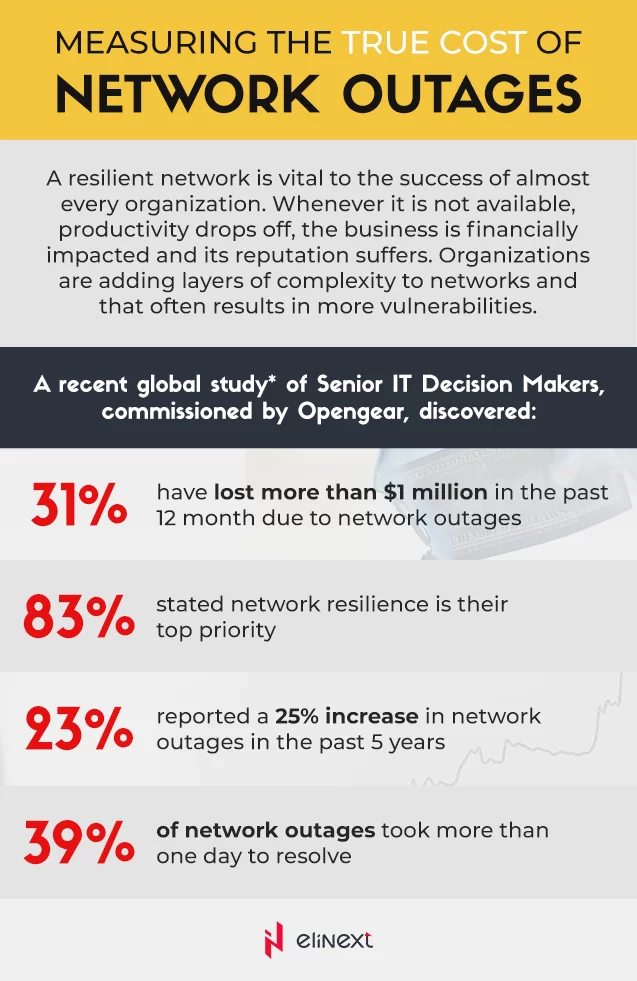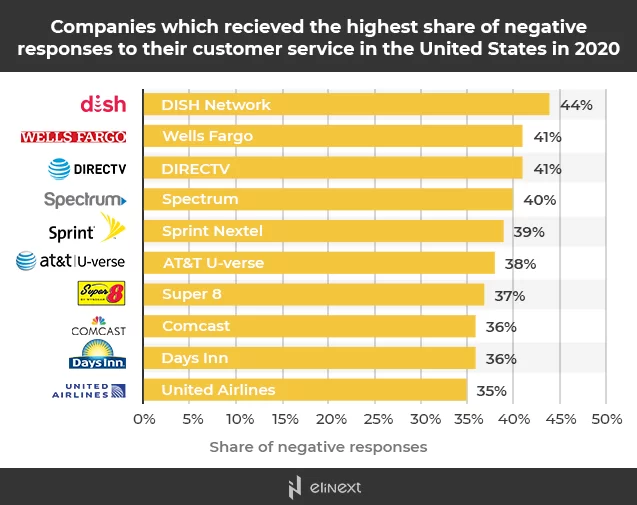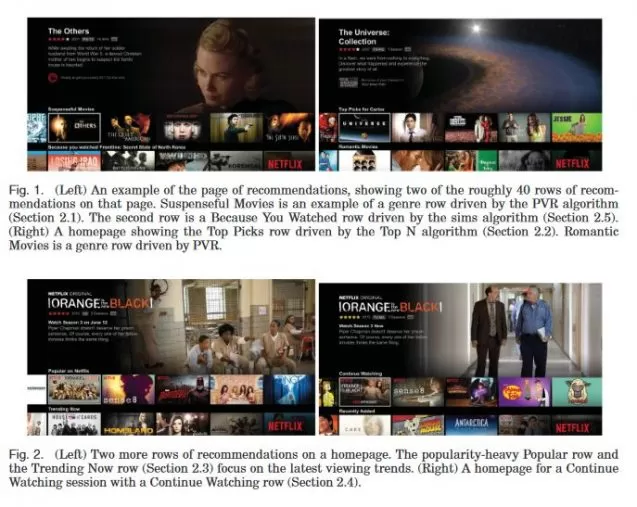Deloitte revealed that the churn rate among over-the-top (OTT) media services grew from 35% in Q1 2019 to 41% in Q1 2020 in the United States due to poor customer experience. However, this is not the only problem faced by telecom providers nowadays. In this article, we will talk about the challenges in the telecom industry, how big data can help telcos solve their problems, and look at the key features of big data monitoring software.
Big data technologies provide telecommunications companies with access to qualitatively new knowledge and opportunities, which not only give them a competitive advantage in the market but also develop the whole industry and unlock hidden potential. Let’s see which barriers the telecom sector has to hurdle nowadays.
Common Problems to Solve
Telcos usually struggle with the following common problems:
High Costs
As a rule, telecommunication companies have to spend a lot of money on infrastructure. It is quite expensive to maintain and repair both wireless and cabled telecommunication equipment. Therefore, providers need a solution that will be able to analyze the state of the equipment and identify potential threats in advance to avoid costly repairs. Open Gear asked businesses how much money they lost due to network outages. Some companies answered that network downtime cost them $1.2 million.

Poor Customer Service
This is one of the biggest problems in the telecommunications sector. Consumers complain about poor call center support, slow data transfer speed, inaccurate billing processes, and so on. Statista revealed that DISH Network, a television provider, is the worst-rated company for customer services in the USA. It received 44% of negative responses. Telcos need a solution that will help them improve customer loyalty, attract new subscribers, as well as improve their products and services.

Billing Issues
Telecom providers are suffering from invoice and billing problems as well. They need a solution that will allow them to keep track of their financial data in a proper manner. A couple of years ago, Vodafone UK was criticized by furious customers due to incorrect roaming billing.
Network Outages
Inclement weather line damage, network congestion, equipment failures, and other crashes is a pretty common occurrence in the telecom sector. Reliable and secure software can solve this problem and save the company from negative outcomes, such as bad performance, etc.
Let’s see how big data can help telcos cope with the above-mentioned challenges.
How Does Big Data Change the Telecom?
Managing Customer Loyalty
Using big data, the telecom providers will be able to:
- create subscriber profiles;
- segment the customer base;
- assess customer preferences;
- calculate profitability for each group;
- identify the most valuable customers; and
- make more targeted offers.
They can analyze customer call records by configurable parameters and determine the social groups of subscribers. The obtained information will allow the companies to plan and evaluate marketing campaigns and high-quality targeting based on subscriber profiles.
Telcos can identify and assess the importance of factors that have an effect on customer loyalty and prevent customer churn that can cost carriers $65 million per month. For example, McKinsey&Company found that applying an analytics-driven solution can help the telcos reduce churn by 15%.
Attracting New Subscribers
Big data helps companies not only retain customers but also attract new subscribers by offering new services and content. But how do they know exactly what their customers want? The answer is simple – to analyze big data that helps providers build a customer persona, guess the interests and needs of the target audience. Flexible offerings and the right content keep old customers, attract new subscribers, and increase operators’ revenues.
For example, Netflix earns up to 75% on purchases offered by a recommendation system, which is based on both collaborative and personalized filtering algorithms. Amazon is doing the same, increasing the profitability of its business.

Analyzing Customer Sentiment
In fact, this section repeats the first two, but we decided to remind you once again that big data allows operators to study and understand customers, their demands, wishes, and problems. Customer sentiment is the emotions that the clients feel about the product, service, or company.
The telecommunications industry is constantly changing due to the increasing role of Internet services. Therefore, it is essential for telecommunications companies to determine how their clients react towards a particular service or content. They use big data to process this information and try to resolve customer issues in real-time. Modern tools collect feedback from various social networks, conduct analysis, and provide the telcos with the opportunity to meet the demands of their customers.
Performing Preventive Diagnostics
By analyzing various parameters of equipment operation, the telcos can identify patterns of system behavior that precede the occurrence of failures and determine the causes of failure. Early diagnosis allows them to plan preventive maintenance, replacement, and repair of equipment in a routine, hassle-free way for customers.
In addition to the technical diagnostics, predictive analytics based on big data can help the operators to analyze the intentions of their customers by taking information from their social networks. Big data allows telecom providers to find influencers among their customers.
For example, an influencer got disappointed in the services rendered by any telecommunications company. He/she wants to transfer to the competitor and publishes an emotional FB post. His/her friends read this message and decide to change the provider because they value his/her opinion. The company, in turn, has a chance to improve the services and retain the customers. T-Mobile managed to reduce the level of churn by 50% per quarter thanks to the big data approach.
Detecting Fraud
Telcos attract great numbers of users every day. For instance, the above-mentioned T-Mobile numbered more than 102 million customers in Q4 2020, an increase from almost 67 million in Q1 2020. Hackers are actively hunting for subscribers’ data. They fake user profiles and steal their private information. In December 2020, the personal data of about 200,000 T-Mobile customers were compromised. Another incident took place in February when attackers stole the personal data of 129,000 clients of Singtel, a Singaporean telecom company.

Solutions based on big data analysis and machine learning technology can protect users. They are able to recognize phrases that are typical of cybercriminals and intercept spam mailings and calls.
For example, the Chinese mobile operator China Mobile created a mobile app, called Tiandun or Sky Shield. This app uses big data and artificial intelligence technologies to curb telecom fraud. The police provided the developers with a database of fraud cases used by the system to learn how to recognize spam and fraudulent behavior. It can also identify user groups that are most vulnerable to spam and warn them about threats using SMS notifications.
Optimizing the Network by Analyzing in Real-Time Mode
Telcos use big data to track network activity, predict future capacity demand, and track deterioration in service delivery. For example, if a network failure or congestion occurs somewhere, the operator will immediately receive appropriate notification. It will be able to quickly fix the problem since big data is sent in real-time mode.
By analyzing big data, the companies will be able to identify areas of high congestion and make decisions on expanding network capacity if required. They can also predict throughput based on traffic analysis and real-time data. When the provider has data on the predicted traffic, connectivity needs, customer experience, projected ROI, potential profit, and so on, it can allocate investments wisely.
So, we’ve learned how big data can boost the telecom sector and facilitate the providers’ growth. Another question is how to choose the right solution? Let’s see which features a good big data tool should have.
Big Data Monitoring Software. Features to Know
Easy Integration
Since the application works with multiple data sources, it must integrate well with various ERPs, CRMs, websites, and other platforms.
Real-Time Analytics
These solutions must be able to analyze big data in real-time mode. Telecommunications companies will have the opportunity to quickly assess the situation and make a decision.
Security
The tool must ensure the security of your data. For this purpose, it should include data encryption and authentication.
Reporting and Data Visualization
The application should be able to prepare detailed and understandable reports, as well as visualize data, such as performance indicators, etc. An intuitive report or chart will allow you to quickly touch the spot and make the required decision.
Summing Up
The global big data market value reached USD 138.9 billion in 2020 and is expected to grow to USD 229.4 billion by 2025. Big data solutions open up great opportunities in almost all industries, including telecommunications. They help telecom providers to better understand their consumers and build trusting relations with them by offering the services and content that are in demand. Big data also allows carriers to monitor the equipment state and prevent fraud. You just need to find suitable software or a vendor that will develop a powerful big data instrument.









